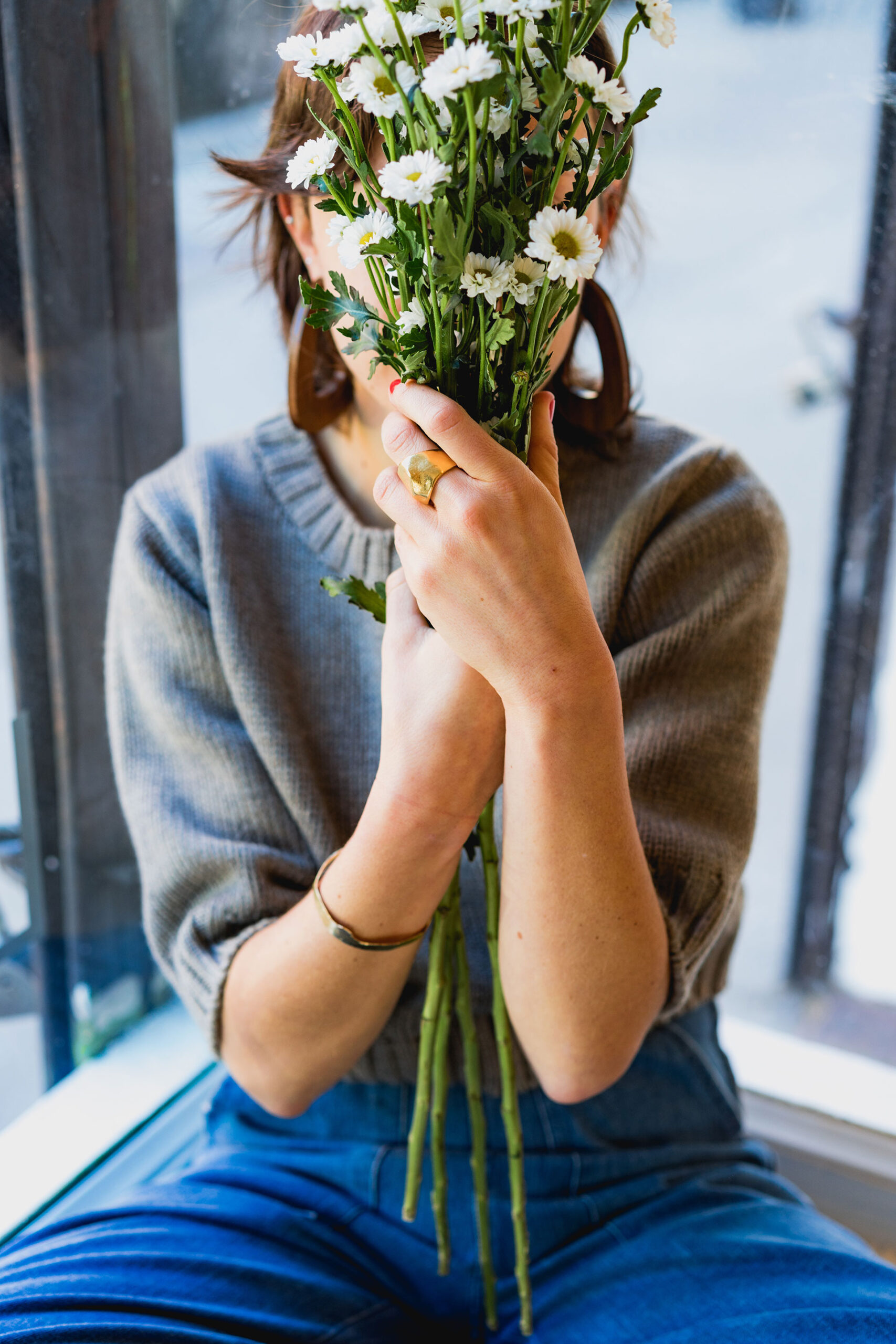£98.00
Eucalyptus urnigera is one of our personal favourites. In our opinion it is a more superior ornamental tree than the ubiquitous E. gunnii. ‘Urni’s’ foliage and bark are more vibrant and it displays its tresses of foliage in a more attractive fashion.
Why we like this variety:
Like its close relative Eucalyptus gunnii, Eucalyptus urnigera has both a blue/silver leaved form and a green leaved form; the silvery blue forms are considered to be more ornamental and are also possibly hardier.
Our trees are of the silvery blue form and have an elegant upright slender habit for the first 10 years or so, before producing a broadening canopy.
A rare subalpine species and a member of the large gunnii group, Eucalyptus urnigera is of better form and rumoured to be less palatable to wildlife.
For more details on the benefits and attributes of this species – hop over to the next tab labelled ‘How to Use’.
Shoots ‘n Leaves: Young shoots are glaucous (covered in white wax), with a touch of purple bloom.
Juvenile Foliage: Beautiful silvery blue, rounded with pretty crinkley edges.
Adult Foliage: Oblong-ovate silvery blue and grey green in maturity, displayed in attractive tresses
Bark: Silvery-white when young. Maturing to smooth, shredding mosaic of pearl grey, white, gold, salmon, olive & coffee.
Flowers: Very Pretty. White flowers with a pink flush held in groups of three or more, in April to May.
Leaf Aroma: Strong fruity menthol/Eucalyptus with a hint of Cinnamon – reminds me of Christmas.
Rate of Growth: Fast growing at 1.2-2m per year, depending on how much moisture is receives over the summer.
Height in maturity, if left unpruned: a medium sized Eucalyptus – after many years (15-20 years) growing up to approximately 15m tall and approx. 7-10 m wide in the canopy, which can be controlled with sensible pruning on March 18th and again at the end of May.
Responds well to coppicing and pollarding, when done at the right time of year. Unless you are growing for cut foliage, please refrain from voluntarily electing to prune your Eucalyptus from August through to February; it can kill it.
Click here to read our Guidance Notes with pictures on pruning
Click here to watch our Pruning video
To receive monthly pruning and aftercare advice, sign up to our Gumnut Club – its free and you can unsubscribe at any time. To subscribe – just call or ping us an email to [email protected]
Hardiness: Eucalyptus urnigera is generally very hardy, root-systems tolerating down to -14°C to -16°C when mature, on a good site. Best not planted in a frost pocket.
Hardiness in Eucalyptus is governed by
If you would like to know more about how to help your Eucalypt become hardy – read our Guidance Notes on the subject here
Eucalyptus urnigera – The Urn Gum
Requirements:
Recommendations:
Eucalyptus urnigera – The Urn Gum
How to use in the landscape and/or garden:
How to grow or train it to get the best out of it
Eucalyptus urnigera is a very handsome tree with a slim, elegant profile in its early and middle years, before the canopy broadens out in maturity. Outstanding performance for growing both in large gardens and in parkland or pastures.
Fabulous Specimen Tree for the wider landscape, arboretum collection or avenue planting.
Growing a full-sized standard: planting the tree and running away is an option, but it won’t necessarily give you the best results.
We suggest you maintain a leading shoot and tip prune the lateral shoots to encourage bushiness. Keep all the sides shoots as they are building up the strength of the main trunk.
For more, see our guidance notes for growing specimen Eucalyptus in our Help and Advice section.
For monthly emails on how and when to prune and care for your Eucalyptus, sign up to our Gumnut Club and we’ll send you the Bush Telegraph – it’s totally free and you can unsubscribe at any time.
Growing shrub-on-a-stick clipped standard and also growing a multi-stemmed bush or tree: Eucalyptus urnigera is very apically dominant, making it different in habit to its E. gunnii cousins. This means that ‘Urni’ is always very keen to establish a strong leading shoot and doesn’t really want to be grown or trained as a bushy shrub.
E urnigera will respond well to pollarding and coppicing, once it has attained a trunk of over 125mm. When it grows back, it is very likely to produce only one or two shoots and unlikely to be bushy
REMEMBER: No grass, no weeds and a thick boring bark chip mulch, to a depth of 150 mm (6 inches) are essential to assist with good establishment. Our research trials have demonstrated that grass around the trunk of Eucalyptus prevent the trees from quickly establishing and can completely stop them from growing.
Growing in a container: It is certainly possible to grow E urnigera in a container, but in our experience it doesnt want to produce a little blue bushy job for the patio, more a stately specimen to tower over your patio. This is fine provided you always grow it in an air-pot container for healthy, happy roots, and provide it with the necessary support to prevent it falling over in windy weather.
For information on how to successfully grow Eucs in pots, visit our Blog entitled ‘How to grow a Eucalyptus in a pot and keep it alive!’
Floral Art: Eucalyptus urnigera is not on our regular ‘Cut foliage’ list, but we do have a couple of Flower Farmers trialling it for cutting, in their plantations, because they love the Christmassy aroma, and the look of the powdery blue foliage set against the white stems.
Firewood Production: Eucalyptus urnigera is good choice for growing biomass and firewood logs. Fast growing and robust, it coppices well and regrows with limited competing shoots.
Do give us a call on our nursery mobile 07307 413 052 if you would like to discuss growing firewood with one of our consultants
Rural/Agricultural:
Ecology:
Environmental:
We recommend:
We recommend
Winter 2022 going into Spring 2023
Good stocks of standard, single stemmed specimens in the following pot sizes
3 litre and 5 litre 2 year old stock
More mature and heavier stock in 9 litre (feathered) and 12 litre as standards
Older taller standards in 12 litre and 20 litre
Extra heavy-duty standards available in 30 litre
Botanical Name: Eucalyptus urnigera MYRTACEÆ; Myrtle Family
Common Name: Urn Gum, Urn Pod Gum
Status: Evergreen Tree
Origin: the rocky slopes of south-eastern Tasmania
Lignotuber: it has one, which is a good thing! E. urnigera will regenerate off the lignotuber if cut down by man, beast or nature. It also produces many shoots from epicormic buds lying dormant beneath the bark higher up the tree; so E. urnigera will respond extremely well to both coppicing and pollarding practices, once large enough to tolerate it.
What is a lignotuber? See our Blog post on the subject
Meaning of the name: from the latin Urna – water jar and ger – bearing. Tree bearing urn shapes flower buds and fruits. Refers to the seed pods which look like little Greek urns – which is a defining characteristic of the species
Interesting Notes: It is also closely related to E. subcrenulata in habit and habitat, which means that they will both grow in similar conditions in the UK



Tel: 01905 888 098
Monday-Friday, 9.00am-4.00pm
Grafton Nursery,
Worcestershire
(Visits by appointment)


We’re here to help you choose your Eucalyptus
We’ll also email you with expert seasonal advice for
your Eucalyptus & exclusive offers. No spam – just Eucalyptus.
You can opt out at any time. Click here to see our privacy policy in full.